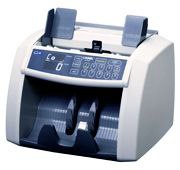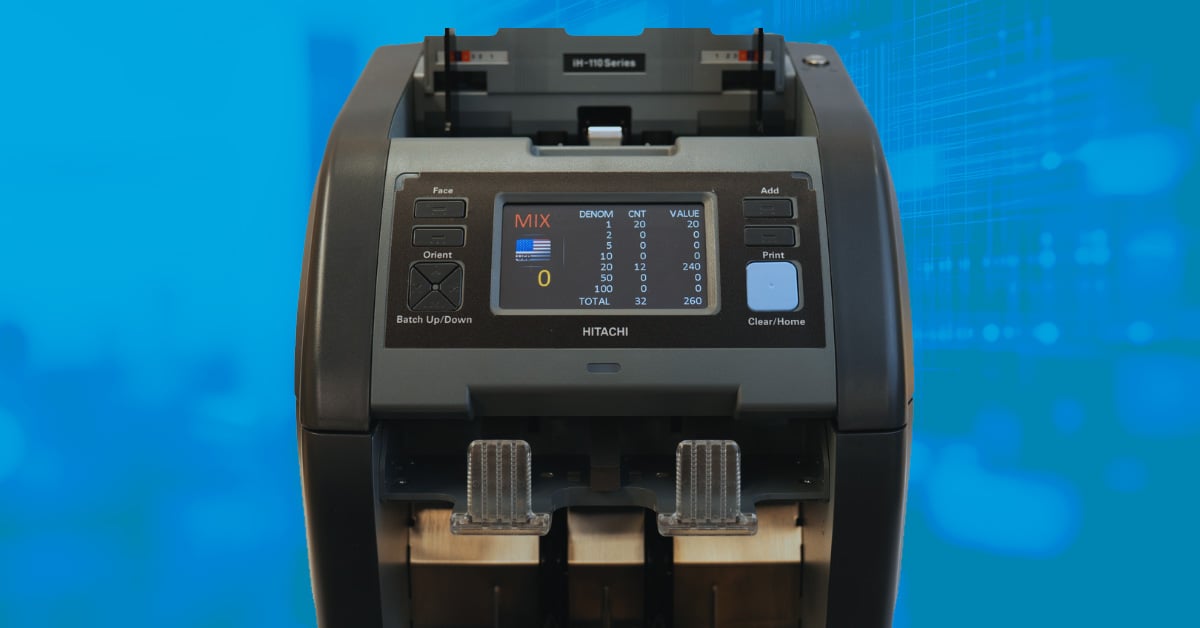How Cash Discriminators Can Improve TCR Performance
Both the Teller Cash Recycler (TCR) and Cash Discriminators are powerful tools that, when implemented, can magnify the productivity of a financial...
2 min read
 Joe Farrell
:
Apr 21, 2014 12:26:00 PM
Joe Farrell
:
Apr 21, 2014 12:26:00 PM


Many financial institutions still implement the use of basic currency counters to help process cash. There are several problems created with that strategy. First, if there is a wrong denomination mixed in with a strap it will be counted as a proper denomination therefore putting the teller out of balance or prolonging the out of balance situation.
Secondly, counterfeit note production (crooks) and detection (customers/tellers) continues to be a challenge for most financial institutions. Cash discriminators continue to update their ability to catch better and better counterfeit notes, therefore reducing FI losses or customer losses. Lastly, handling of mixed currency deposits is drastically slowed down by the use of basic counters. Tellers must hand sort currency to then run it through the counter, making hand counting often times faster than using a basic counter.
One of the primary reasons financial institutions implement cash discriminators is strap integrity. A two-pocket discriminator is typically set to read the first bill of a stack as the denomination it’s supposed to be counting and will reject any bill that doesn’t match that denomination. This allows the teller to confirm if she is counting a full strap or 100 bills, that all 100 bills are of the denomination they believe they are counting. This mode can also be very useful when trying to count a drawer down and find an out of balance situation. Many times during the day money can accidentally get mixed in the drawer bins, and by running that money through a basic counter, it makes it very difficult to find that mixed bill.
Commercial deposits provide their own sets of challenges that the discriminator can help conquer. Since there are a variety of ways customers deliver deposits such as night drop and over the counter, determining the best time and means of processing that currency can be challenging. The deposits can come in sorted by denomination, banded off in total value but have mixed bills or lastly just a bag of mixed cash with no organization. The cash discriminator can help handle all of these types dramatically faster. The mixed mode allows the teller to run all denominations at once, get a total by denomination and key that information into the teller system and complete the transaction. In addition to just the machine, the process can be further improved by adding a printer or even integrating the counter to the teller system.
Most tellers will face and orient all bills for teller transfer, vault transfer or sending to FED. The two pocket discriminator has modes that will allow the machine to face the money for the teller for faster organization of the cash.
Ultimately, the discriminator is the first level of cash automation. This product solves a lot of cash handling needs that happen on the teller line for a fraction of the cost of technologies like cash recyclers. If you are still implementing basic counters, you should strongly consider changing to discriminators to dramatically improve efficiency and productivity in your teller line.

Both the Teller Cash Recycler (TCR) and Cash Discriminators are powerful tools that, when implemented, can magnify the productivity of a financial...

Every year a variety of clients ask us if they need a cash discriminator or will a basic counter meet their needs The clients range from Banks and...

If you're running a branch, a retail operation, or a team that handles a high volume of cash, chances are you've already felt the drag of inefficient...